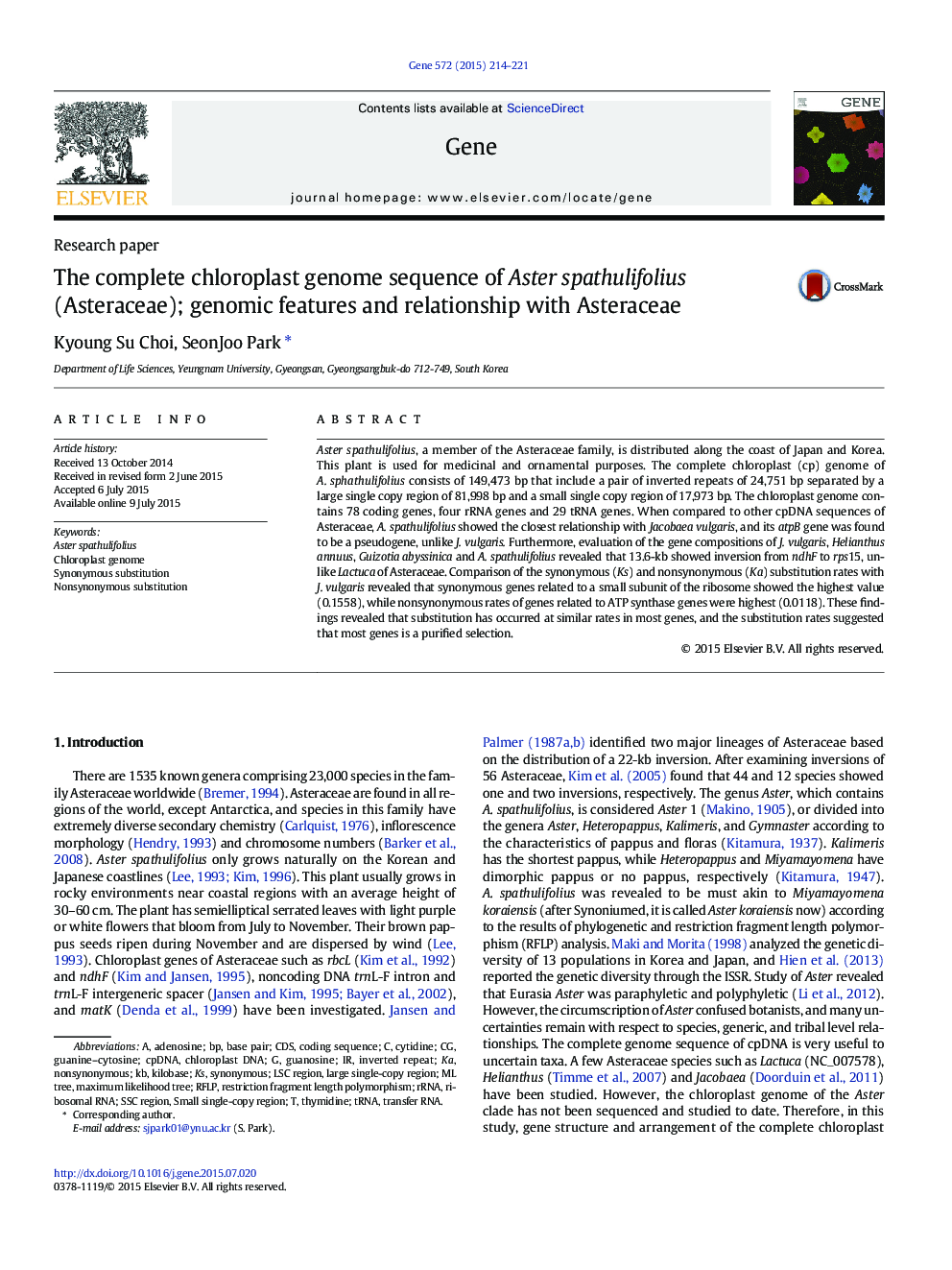| کد مقاله | کد نشریه | سال انتشار | مقاله انگلیسی | نسخه تمام متن |
|---|---|---|---|---|
| 2815533 | 1159876 | 2015 | 8 صفحه PDF | دانلود رایگان |

• We report the first complete sequence of genus Aster chloroplast genome.
• The complete cp genome of Aster spathulifolius has 149,473 bp in length and contains 111 genes.
• We find atpB gene pseudogenization in Aster spathulifolius.
• The substitution rates between Aster and Jacobaea plastid genomes were analyzed.
Aster spathulifolius, a member of the Asteraceae family, is distributed along the coast of Japan and Korea. This plant is used for medicinal and ornamental purposes. The complete chloroplast (cp) genome of A. sphathulifolius consists of 149,473 bp that include a pair of inverted repeats of 24,751 bp separated by a large single copy region of 81,998 bp and a small single copy region of 17,973 bp. The chloroplast genome contains 78 coding genes, four rRNA genes and 29 tRNA genes. When compared to other cpDNA sequences of Asteraceae, A. spathulifolius showed the closest relationship with Jacobaea vulgaris, and its atpB gene was found to be a pseudogene, unlike J. vulgaris. Furthermore, evaluation of the gene compositions of J. vulgaris, Helianthus annuus, Guizotia abyssinica and A. spathulifolius revealed that 13.6-kb showed inversion from ndhF to rps15, unlike Lactuca of Asteraceae. Comparison of the synonymous (Ks) and nonsynonymous (Ka) substitution rates with J. vulgaris revealed that synonymous genes related to a small subunit of the ribosome showed the highest value (0.1558), while nonsynonymous rates of genes related to ATP synthase genes were highest (0.0118). These findings revealed that substitution has occurred at similar rates in most genes, and the substitution rates suggested that most genes is a purified selection.
Journal: Gene - Volume 572, Issue 2, 10 November 2015, Pages 214–221